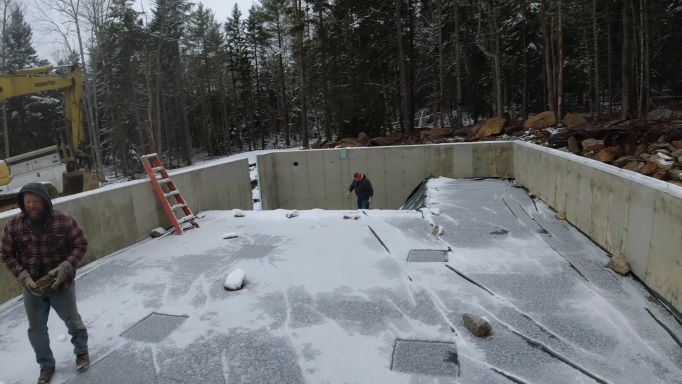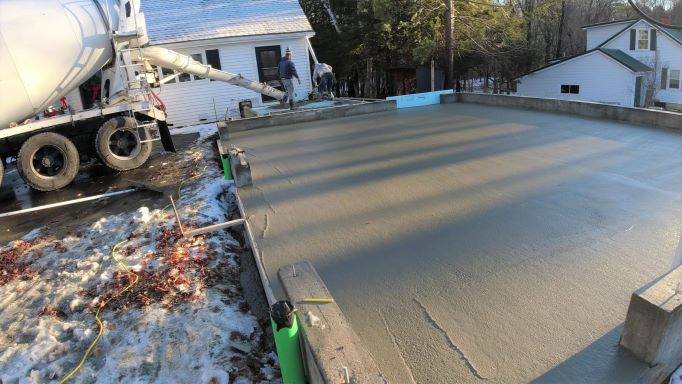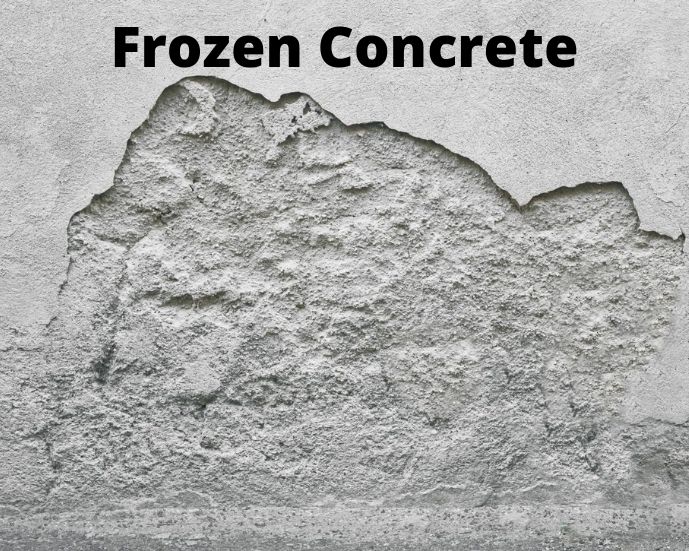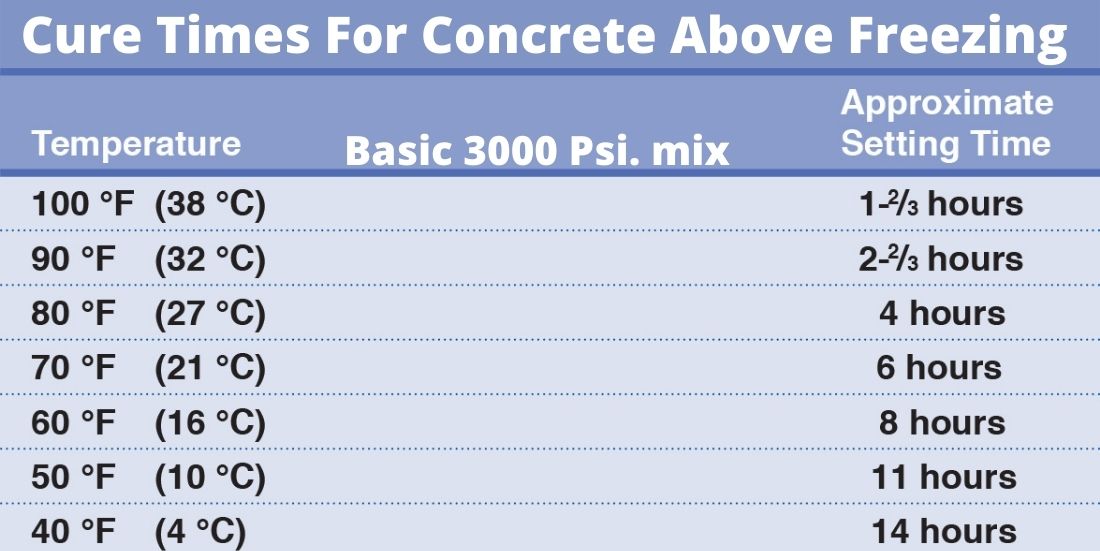Can you pour concrete in the winter?

It is possible to pour concrete in the winter if you take the proper precautions. First, protect the sub-base from freezing. Second, use a cold weather concrete mix that includes warm to hot mixing water. Third, cover the concrete with curing blankets to keep the concrete from freezing.
I've been pouring concrete in very cold winter weather for many years. Living in Maine, our winters are from December 1st to the end of March.
Being a concrete contractor, I have to pour concrete when the temperatures are 40°F, 30°F, 20°F, and even 10°F.
In the video below, we're pouring this concrete floor with Temps below freezing.
will concrete cure in cold weather
Concrete will cure in cold weather. It'll even cure in freezing temperatures if you protect it.
When concrete cures it generates heat. This is called "heat of hydration". When cement and water get mixed together (two ingredients of concrete) a chemical reaction takes place.
It's this chemical reaction that creates heat and begins the curing process. When outside temperatures are cold, the chemical reaction slows and less heat is created. This can dramatically slow the curing process but the concrete will still cure.
If you can use warm or hot mixing water, this will greatly increase the cure time and lesson the chance of the concrete freezing.
If you can somehow heat the space by building a tent over it or pouring inside a building with heat, this will help the concrete cure better.
Lastly, if the concrete is exposed to temperatures at or below freezing, you must cover the concrete with curing blankets or poly with hay on it to protect the concrete from freezing.
 Temperatures were 25 degrees Fahrenheit at time of pour.
Temperatures were 25 degrees Fahrenheit at time of pour.What I've experienced pouring many concrete floors in the winter is if the temperatures are above freezing and will stay above freezing for the next week, you don't have to protect the concrete.
The concrete will cure from heat of hydration, it'll just be a lot slower.
Personally, I still like to cover the concrete for curing purposes. Covering with poly, a tarp, or blankets will hold some of the heat of hydration in the concrete and it will cure better.
Once the concrete reaches 500 psi. it can withstand temperatures getting below freezing at that point.
If the temperatures are at or below freezing on the day of the pour and for any days following that (for the next week) I cover the concrete with insulated curing blankets and leave them on for at least a week.
what temperature is too cold to pour concrete?
I don't know if there's an exact temperature when it's too cold to pour concrete. What I do know is, if you protect the sub-base from freezing and your concrete mix has hot water you can pour when it's below freezing.
When we pour concrete floors in temperatures below freezing, the sub-base is protected with insulated curing blankets, styrofoam, and sometimes poly and hay. Either one or a combination of these to keep the ground from freezing. Never pour concrete on frozen ground.
My concrete mix is usually a 4000 psi mix with 150°F hot water and we always use an accelerator in the mix. Either flake calcium chloride or a liquid accelerator from the batch plant.
As you'll see in the video below, we started pouring at 7AM when it was 15°F. The high for the day was 30°F. The concrete temp was very warm (68°F) and cured very good, we finished power troweling at 2PM.
After power troweling we sawed our contraction joints and covered the slab with insulated curing blankets, leaving them on for a week. The concrete slab cured perfectly.
Pouring on top of styrofoam in cold or sub-freezing temps helps keep the concrete temperature warm and greatly increases the speed of curing.
If the concrete mix doesn't have warm or hot water in it, I wouldn't pour concrete in temperatures below 35 to 40 degrees Fahrenheit to be safe.
If the morning temperatures are at or around 35°F and temps are forecast to get up into the 50's then go back down to 35 - 40 that night, you should be ok to pour even with cold mixing water. I would use an accelerator in the mix to help it cure faster in this case.
what happens if new concrete freezes?
 This concrete slab was left unprotected and froze the night of the pour.
This concrete slab was left unprotected and froze the night of the pour.If new, freshly poured concrete freezes before it reaches 500 psi. strength, there's going to be some damage done to the concrete.
The extent of the damage won't be visible right off. It could take days, or even months to see what kind of damage occured.
What I've found when a concrete floor or slab is left unprotected and is exposed to freezing temperatures the day of the pour or even a few days after:
- The concrete doesn't reach its full strength
- The concrete develops more cracks
- The surface starts to peel, scale, or flake off
- The concrete is "softer" and more susceptible to wear and tear
- There's internal damage that's not visible to the eye
Newly poured concrete has a lot of mixing water in it. As the concrete cures, a lot of this moisture evaporates. In cold temperatures, this takes much longer to occur than in the summer.
If the moisture freezes inside the concrete, it will expand causing damage. The concrete isn't "strong" enough to take the stress of the moisture expanding inside of it.
The extent of the damage done to the concrete will be related to how much below freezing the temperature was and for how long the concrete was exposed to freezing temperatures.
tips for how to pour concrete in the winter
Here's a few tips that I use when I schedule a concrete pour in the winter.
- Protect the sub-base from freezing with insulated blankets or poly & hay
- Don't pour on frozen ground, snow, or ice (the concrete will settle and crack if you do)
- Unthaw any frozen areas of the sub-grade using a ground heater
- Use a higher psi. mix for more cement (this will increase the heat of hydration)
- Ask the batch plant to use warm or hot water in the mix
- Use an accelerator additive in the concrete mix (most Ready-Mix Co. have these)
- Plan on how you will protect the concrete afterwards (insulated blankets work really good)
- Have some lumber available to "hold down" the insulated blankets (the wind will blow them off)
- Leave on any forms for a few days
- If bad weather is forecast after you finish the slab, add a layer of poly over the blankets to keep the slab protected from rain, snow, and freezing rain.
will concrete cure at 30°f

Above you see a basic chart of how long it takes concrete to cure at different temperatures.
These are just estimated times so you can visually see how much longer it takes concrete to cure as the temperatures drop.
When the outside temperatures get to the freezing point and below like 30°F, the concrete will need some help to cure properly.
Plan on curing the concrete by heating the space, covering with insulated blankets, covering with poly and straw or hay or laying ground heater tubes on and around the concrete and covering with a tarp.
The concrete needs heat to cure properly, without heat the concrete may not reach its full strength.
For more information about pouring concrete in the winter take a look at my page about cold weather concrete.














